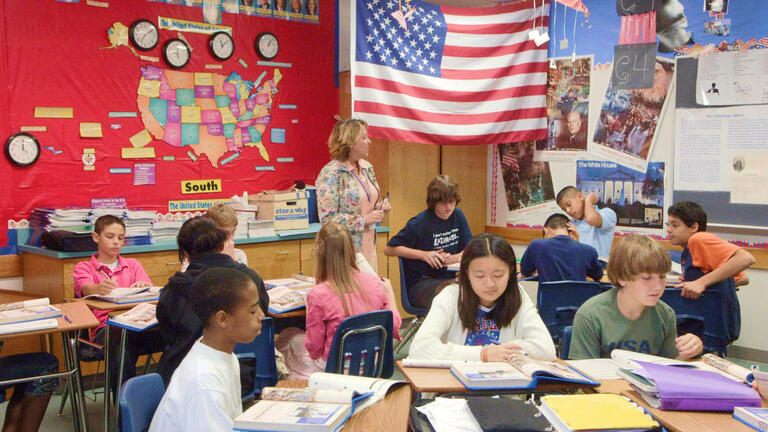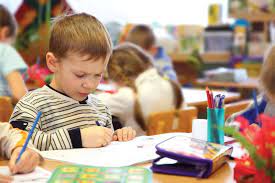The question “Is the education system working?” feels like opening a Pandora’s box of opinions, data, and personal stories. As a former student who once sat in those squeaky classroom chairs and now observes the system as an outsider, I’ve seen the highs and lows of education firsthand. This article unpacks the state of the education system, blending real-world insights, data, and a touch of humor to explore whether it’s truly preparing students for the modern world.
What Does “Working” Mean for Education?
Defining a “working” education system is trickier than acing a pop quiz. It’s about preparing students for life—academically, socially, and professionally—while adapting to a fast-changing world. A functional system should foster critical thinking, creativity, and practical skills, not just churn out test scores.
The Purpose of Education
Education isn’t just about memorizing facts; it’s about equipping young minds to navigate life’s challenges. From problem-solving to emotional resilience, a good system balances academics with real-world readiness. Yet, many argue it’s stuck in an outdated model, prioritizing rote learning over innovation.
Measuring Success
How do we gauge if the system works? Metrics like graduation rates, literacy levels, and employment outcomes are a start. But intangibles—like student engagement and mental health—matter just as much. A system that produces high grades but stressed-out kids isn’t winning any gold stars.
Strengths of the Current Education System
The education system isn’t all doom and gloom. It has strengths that deserve a round of applause, even if they’re sometimes overshadowed by its flaws.
Access to Education
More kids have access to schooling than ever before. According to UNESCO, global primary school enrollment reached 89% in 2020, up from 82% in 1999. Programs like free lunches and scholarships help bridge gaps for underserved communities.
Technology Integration
From interactive whiteboards to online learning platforms, technology has revolutionized classrooms. Tools like Google Classroom and Khan Academy make learning accessible and engaging, especially for students in remote areas.
Pros of Technology in Education
- Accessibility: Online resources reach students anywhere.
- Personalization: Adaptive learning apps cater to individual needs.
- Engagement: Gamified lessons make learning fun.
Cons of Technology in Education
- Distraction: Smartphones can derail focus.
- Inequity: Not all students have reliable internet or devices.
- Overreliance: Teachers may lean too heavily on tech over human interaction.
Skilled Educators
Teachers are the unsung heroes of education. Many pour their hearts into crafting lessons that inspire. For example, my high school history teacher turned dry dates into epic stories, making me love a subject I once dreaded.
Where the Education System Falls Short
Despite its wins, the system has cracks that can’t be ignored. These gaps affect students, teachers, and society at large.
Outdated Curriculum
The world has changed, but many curricula haven’t. Subjects like coding, financial literacy, or mental health education are often missing. A 2023 OECD report found that 65% of students feel their education doesn’t prepare them for modern careers.
Why Curricula Lag Behind
- Slow Updates: Bureaucracy delays curriculum changes.
- Focus on Testing: Standardized tests prioritize memorization over skills.
- Resource Gaps: Schools lack funding for new programs.
Overemphasis on Standardized Testing
Standardized tests are the bane of many students’ existence. They reduce learning to bubble sheets, sidelining creativity and critical thinking. A 2021 study by the National Education Association showed that 70% of teachers feel testing eats up too much instructional time.
Mental Health Crisis
Students today face unprecedented stress. Anxiety and depression rates among teens have spiked, with a 2022 CDC report noting that 44% of high schoolers feel persistently sad or hopeless. Schools often lack counselors to address this growing need.
Signs of the Mental Health Struggle
- Increased absenteeism due to stress.
- Burnout from academic pressure.
- Lack of coping skills taught in classrooms.
Inequality in Education
Not all schools are created equal. Wealthier districts boast better facilities, while underfunded schools struggle with outdated textbooks and overcrowded classrooms. The U.S. Department of Education reported in 2023 that per-pupil spending varies by as much as $12,000 between districts.
Comparing Education Systems Globally
How does the U.S. stack up against other countries? Let’s break it down.
| Country | Strengths | Weaknesses | Key Metric |
|---|---|---|---|
| Finland | Student-centered, minimal testing | High teacher training costs | Top PISA scores |
| Singapore | Rigorous academics, strong STEM focus | High student stress | Leading math scores |
| U.S. | Diverse opportunities, tech integration | Inequality, test-heavy | Mixed PISA results |
| South Korea | Discipline, high achievement | Extreme pressure on students | High literacy rates |
Lessons from Finland
Finland’s system is often praised for its focus on play, creativity, and minimal homework. Teachers are highly trained, and students aren’t bogged down by constant testing. Could the U.S. borrow a page from their book?
Singapore’s Rigorous Approach
Singapore excels in math and science, but its high-pressure environment leads to student burnout. Balance seems to be the missing ingredient.
Personal Stories: The Human Side of Education
Let me share a story. My cousin, Sarah, was a straight-A student but crumbled under the pressure of college entrance exams. She felt like a failure despite her brilliance. On the flip side, my friend Jake thrived in a vocational program that taught him welding—something his traditional school never offered. These stories highlight how one-size-fits-all education often misses the mark.
Solutions to Fix the Education System
The system isn’t broken beyond repair. With some tweaks, it could shine brighter than a freshly sharpened pencil.
Modernize the Curriculum
Schools need to teach skills like coding, personal finance, and emotional intelligence. For example, integrating Code.org into classrooms could spark interest in tech careers.
Reduce Testing Pressure
Shifting focus from test scores to project-based learning could foster creativity. Programs like Edutopia showcase schools successfully doing this.
Invest in Mental Health
More counselors and mental health education could make a difference. Schools like those in California’s Wellness Initiative are leading the way.
Bridge the Equity Gap
Increased funding for low-income schools is critical. Programs like Title I in the U.S. aim to level the playing field but need more support.
People Also Ask (PAA)
Why is the education system failing students?
The system often prioritizes test scores over practical skills, leaving students unprepared for real-world challenges. Outdated curricula and unequal funding exacerbate the issue.
What are the main problems with the education system?
Key issues include outdated curricula, overemphasis on testing, mental health neglect, and funding disparities. These create gaps in student preparedness and well-being.
How can we improve the education system?
Modernizing curricula, reducing testing, investing in mental health, and addressing inequities are key steps. Innovative programs and teacher support can drive change.
Which country has the best education system?
Finland and Singapore often top the list due to their student-centered and rigorous approaches, respectively. However, each has trade-offs, like cost or student stress.
Best Tools and Resources for Education Reform
For those looking to dive deeper, here are top resources to explore:
- Khan Academy: Free online courses for personalized learning.
- Edutopia: Ideas for innovative teaching methods.
- Code.org: Free coding lessons for students and teachers.
- Coursera: Professional development for educators.
FAQ
Is the education system preparing students for the future?
Not fully. While it excels in some areas, like access and technology, it often fails to teach practical skills like financial literacy or emotional resilience.
Why are standardized tests so controversial?
They’re criticized for narrowing curricula and stressing students out. Many argue they don’t measure true intelligence or creativity.
How can parents support a struggling education system?
Parents can advocate for updated curricula, support teachers, and encourage extracurricular learning through platforms like Khan Academy.
What role does technology play in modern education?
Technology enhances accessibility and engagement but can widen inequities if not all students have access to devices or reliable internet.
Are private schools better than public schools?
It depends. Private schools may offer smaller classes, but public schools often have more diverse programs. Funding and quality vary widely.
Conclusion: A System in Need of a Tune-Up
The education system isn’t a complete failure, but it’s not acing the test either. It’s a mixed bag of successes—like increased access and tech integration—and challenges, like outdated curricula and mental health gaps. By modernizing what we teach, easing the testing obsession, and investing in equity, we can help the system graduate to the next level. Let’s give students the tools to thrive, not just survive.




